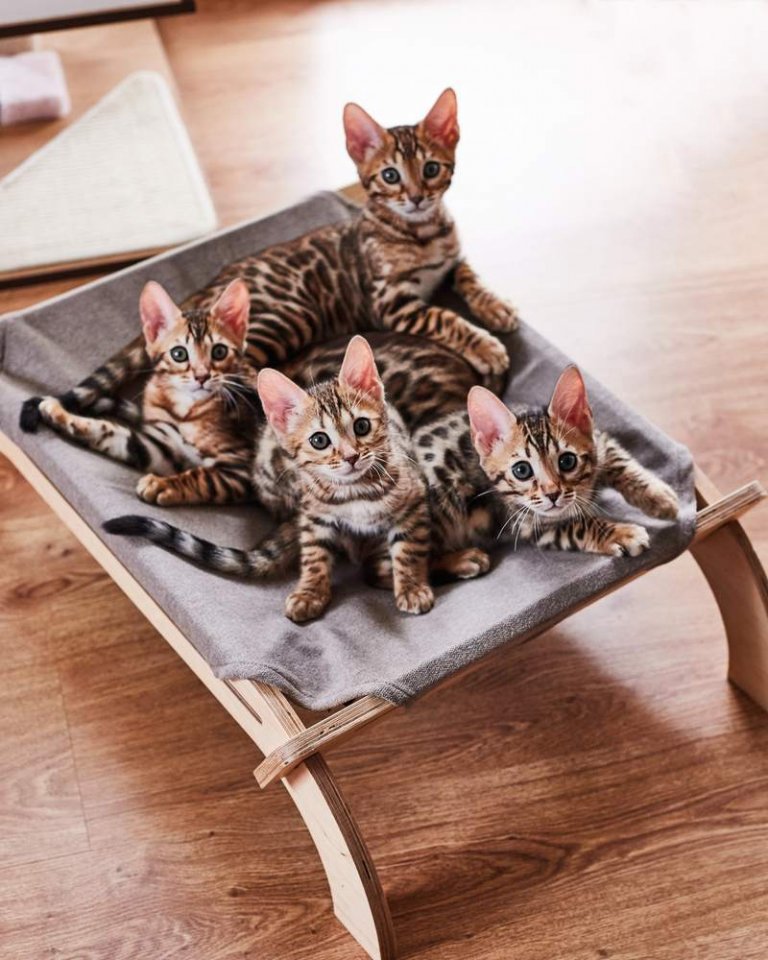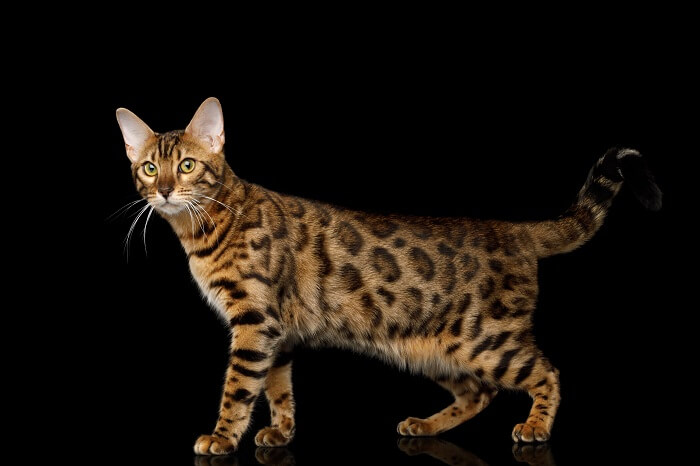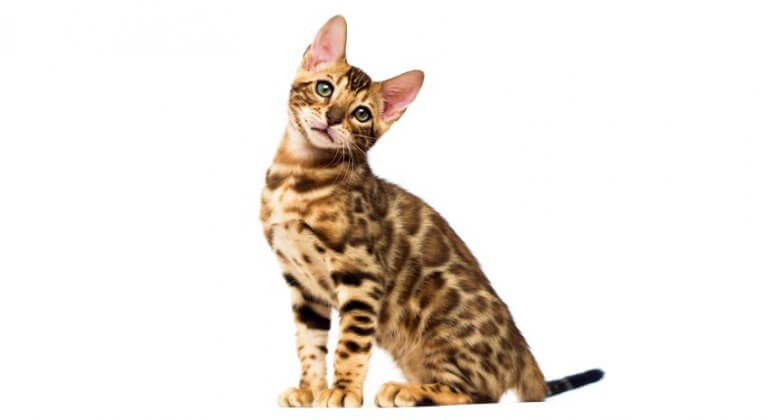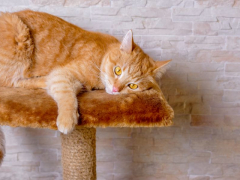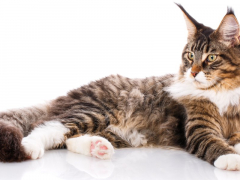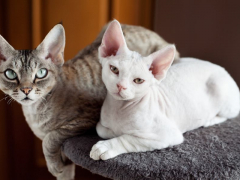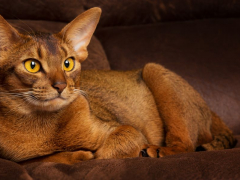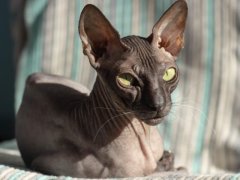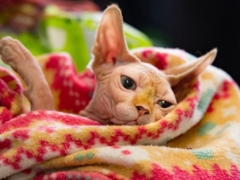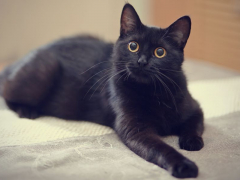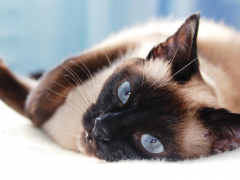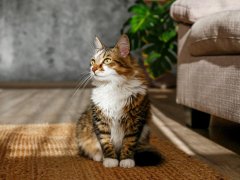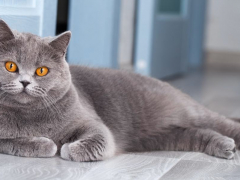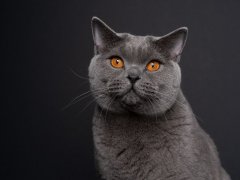Personality and Temperament
With exotic looks to match its name, the Bengal cat originated as a cross between the Asian leopard cat and a domesticated cat. A number of breeds were used in the Bengal cat's development, including the Egyptian Mau, Ocicat, Abyssinian, Burmese, American Shorthair, and domestic shorthair cats. These days, members of the Bengal cat breed are the product of a cross between two purebred Bengal cats.
Playful and active, Bengal cats are excellent pets. Quite a bit less standoffish then some other wildcat hybrids, these incredible cats enjoy affection and develop close bonds with their family members. Although they might be up for a cuddle now and then, Bengal cats are anything but couch potatoes. This highly active breed needs a lot of daily activity and play to thrive.
Bengal cats love to climb and like their wild, jungle-dwelling cousins, they seek high vantage points from which to view their domain. Curious, they like to be in the middle of everything and they enjoy learning how things work.
Bengal cats are notorious for opening doors, activating light switches, flushing toilets, emptying cupboards, and more. They are eager to learn tricks, and thanks to their high level of intelligence, they’re very easy to train. Try teaching your Bengal cat "sit" and "shake paw," and games like fetch.
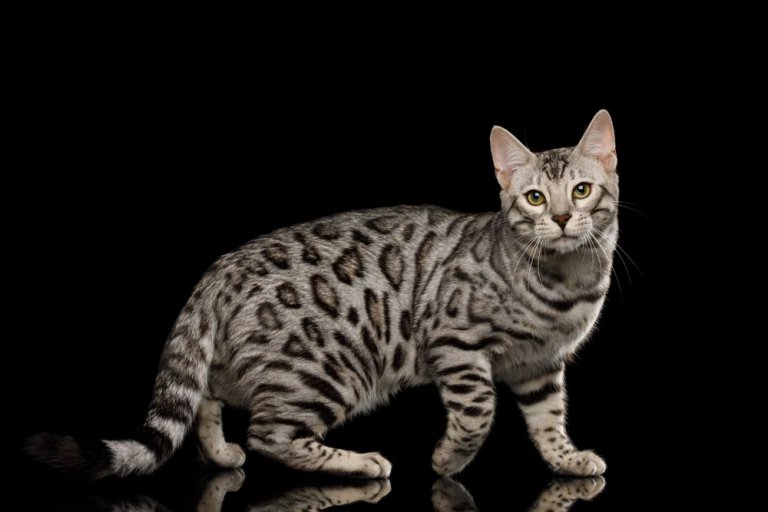
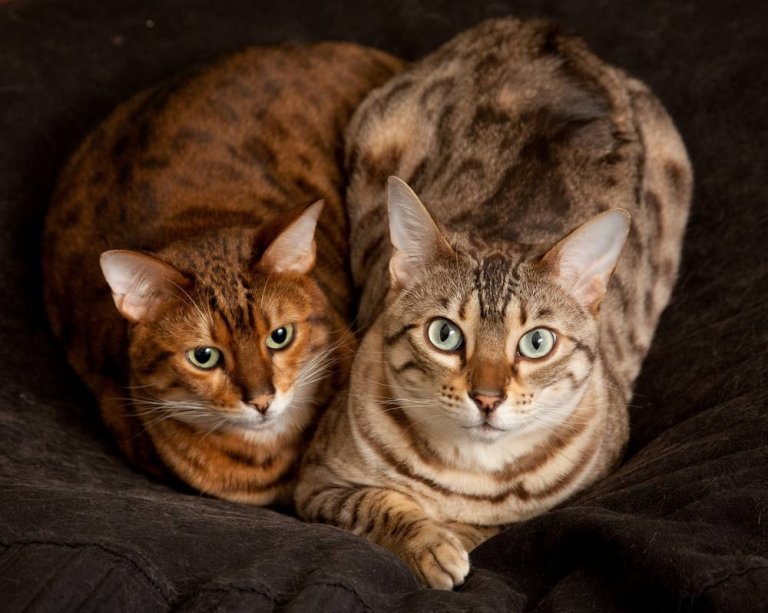
Care
Nutrition
Grooming
Exercise
Health
Just like their wild cousins, Bengal cats need a diet that focuses on meat, particularly if they are members of the first three generations. Most commercial kibble is not really suitable for Bengals, as it is too high in carbohydrates. High-quality canned, fresh or raw food is a good choice as it generally has a higher meat content.
While Bengal cats are perfectly capable of grooming themselves, they appreciate attention and will enjoy brushing on a regular basis. Teach your cat to accept nail trimming from a young age, and brush their teeth daily.
Bengal cats need lots of exercise—far more than the average cat. Although most cats spend most of their time asleep, these frisky felines require numerous play sessions every day, particularly during their first few years of life.
When we say that Bengal cats are high-energy, we mean it. These cats have a reputation for zooming through the house, jumping on furniture, and not stopping until they've made several laps. Interactive play is absolutely essential to your cat's well-being and it'll help save your furnishings, too.
Teaser toys, lasers, and battery-operated cat toys that encourage energetic play are absolute essentials. Make sure your cat has more than one scratching post and be sure to treat them to a tall cat tower that satisfies their natural need to climb. Some Bengal owners use exercise wheels. Much like hamster wheels, these allow your Bengal cat to safely exercise indoors. The more you "catify" your house, the better.
Bengals are often happy to walk on a leash, as they have a built-in need to explore. If you adopt a Bengal kitten, teach them how to walk on a harness and leash from a young age if you’d like to enjoy this activity together. Safe outdoor exploration offers the ideal opportunity for exercise and stimulates your cat's inquisitive mind.
Like many cat breeds, Bengals do have the potential to develop some known health issues. Eye problems such as cataracts and progressive retinal atrophy (PRA) are concerns and might develop as a Bengal cat ages. The hereditary form of PRA is not limited to older cats, though. It sometimes occurs in kittens with symptoms beginning at an age as young as 12 weeks. PRA causes blindness and there is no known cure.
Some Bengal kittens are born with flat-chested kitten syndrome. This is normally caught by the breeder and with treatment, these cats can go on to live healthy lives.
Bengals might develop patellar luxation, a joint disorder that causes the kneecaps to slip to one side. This affects mobility and may cause discomfort, particularly later in life.
A small percentage of Bengal cats develop a form of enlarged heart called hypertrophic cardiomyopathy (HCM). It’s worth noting that this is a hereditary disease and while breeders can have their cats tested for heart murmurs, it is impossible to predict whether future generations will have HCM. There is no such thing as an HCM-free breeding line.
History
Cat fanciers began experimenting with Asian Leopard cat hybridization more than 200 years ago, but the Bengal cat we know and love today didn’t emerge until the 1960s, when Dr. Willard Centerwall of Loma Linda University began hybridizing Asian Leopard cats to see whether they would pass their immunity to feline leukemia on to hybrid offspring. While immunity wasn’t passed on, something great did result from those early experiments: the beginnings of a future new cat breed.
It took decades for Bengal cats to become standardized. In 1980, Dr. Centerwall sent some of his Bengal cats to Jean Mill, who wanted to decrease the desire for fur as a fashion statement by popularizing domestic cats with exotic looks. At the same time, she hoped to reduce the demand for illegal trafficking in wild cats for the pet industry.
The breed was further developed with the addition of Tory of Delhi, a domestic street cat that was imported from India. Other breeders discovered that Egyptian Mau cats were excellent candidates for pairing with Asian Leopard cats, with the cross resulting in beautiful spotted Bengals.
The International Cat Association (TICA) recognized Bengal cats as an experimental breed in 1983, and full recognition was gained in 1993. The Cat Fanciers' Association (CFA) granted the Bengal breed its official recognition in 2016.
